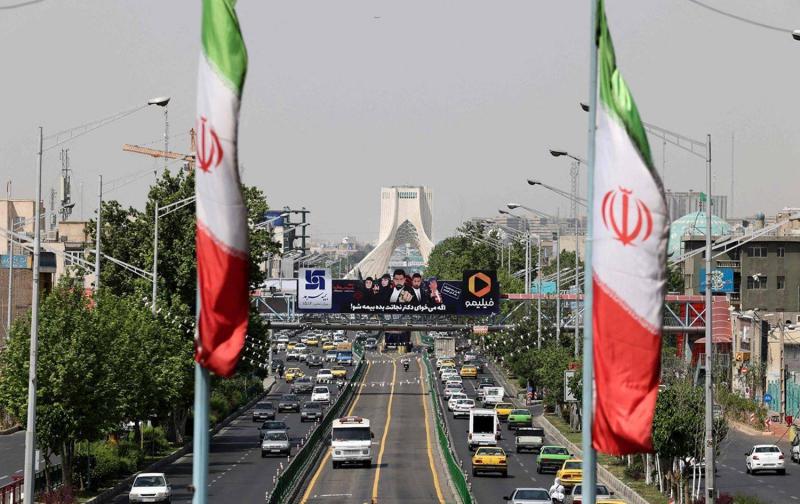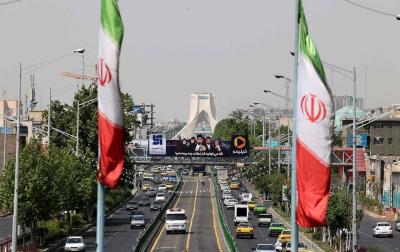Iran began the year 2023 amidst a campaign to suppress the largest popular protests the country has seen in four decades, sparked by the death of young woman Mahsa Amini. In the initial weeks, the government attempted to close the chapter on the protests and strikes, hastily trying protesters in court and carrying out the death sentences of those convicted. Soon after, Iranian Supreme Leader Ali Khamenei issued a pardon for prisoners, including those detained during the protests, amidst skepticism from human rights organizations.
Before the dust settled from the protests, attacks involving non-lethal toxic substances on girls' schools across the country ignited panic and fear among Iranians. The responsible party remains unknown. The repercussions of the protests continue both domestically and internationally, with Tehran accusing Western powers of waging a hybrid war against it. Activist Narges Mohammadi won the "Nobel Peace Prize," while the European Union awarded the "Sakharov" Prize for Freedom of Thought to Mahsa Amini. The United States and Europe imposed successive rounds of sanctions on Iranian officials, particularly targeting leaders in the military and judicial sectors.
### Nuclear File: Enrichment at 83.7%
Tensions escalated between Britain and Iran after Tehran executed Alireza Akbari, a former deputy defense minister and close aide to former Secretary of the Supreme National Security Council Ali Shamkhani, on charges of espionage for Britain. Only 72 hours after revealing Akbari's case, authorities announced his execution. This act heightened tensions between Iran and Western powers, while prospects for reviving the nuclear deal and returning to diplomacy faltered, especially following Russia's increased use of Iranian drones in attacks on Ukrainian cities.
Tehran insisted on its focus on maintaining a diplomatic path and adhering to its conditions for returning to nuclear deal commitments, yet diplomatic attempts remained on the brink of collapse. CIA Director William Burns stated in February that Washington believes Supreme Leader Khamenei has not decided to resume the nuclear armament program. In the same month, the "International Atomic Energy Agency" (IAEA) criticized Iran for concealing changes in enrichment systems at the underground "Fordow" facility, later announcing that its inspectors found uranium particles enriched to 83.7%, significantly higher than Iran's stated enrichment level of 60%. This raised concerns that Tehran might be initiating preparations to enrich uranium to 90%, the threshold required for nuclear weapon production. Iran attributed blame to IAEA inspectors, while the agency noted that Iran informed them of "unintended fluctuations" during equipment changes.
In early March, IAEA Director Rafael Grossi visited Tehran in an attempt to encourage Iranian officials to resolve outstanding issues. Iran agreed to the IAEA's request to reactivate surveillance cameras and increase inspection ratios at the Fordow facility, but Grossi reported in September that no progress had been achieved on some issues contrary to expectations set in March. In September, Iran delivered another blow to the UN agency's missions by revoking the licenses of many experienced international inspectors, significantly impacting the agency's operations.
According to the IAEA's latest report issued in November, Iran's stockpile of uranium enriched to 60% reached 128.3 kg, sufficient for developing three nuclear bombs.
### Missiles and Drones
With the revival of the nuclear deal stagnating, Western powers insisted on maintaining restrictions on Iran's ballistic missile and drone programs outlined in UN Security Council resolution "2231" related to the 2015 nuclear deal, which was set to expire in October. Tehran, however, asserted that those restrictions had ended under the nuclear deal. The Western response resulted from Russia's use of Iranian drones against Ukraine, the potential transfer of ballistic missiles from Iran to Russia, and Iran's violations of the nuclear agreement.
Iran continued its missile activities throughout the past year. In June, the Iranian president unveiled the "Fattah" missile, which the IRGC claimed is a "hypersonic" missile. In May, Iran announced the development of a ballistic missile named "Khyber" with a range of two thousand kilometers. In September, the IRGC announced the deployment of a military satellite into orbit. In November, the Iranian leader inspected the permanent exhibition of IRGC missiles and announced the "Fattah2" missile and the suicide drone "Shahed147."
### Prisoner Exchanges
The United States and Iran reached an agreement for a prisoner swap mediated by Qatar. Iran released five Iranian-American prisoners in exchange for $6 billion in Iranian funds held in South Korea, along with five Iranians incarcerated in U.S. prisons. Prior to this agreement, Tehran had concluded a prisoner exchange deal with Belgium, releasing a diplomat convicted on terrorism charges in exchange for freeing citizens from Belgium, France, and Austria.
The deal came after months of diplomacy between Iran and America, facilitated by Qatar and Oman. Before the announcement of the agreement, information leaked suggesting both parties reached "limited understandings" without reviving the nuclear deal. These included reducing uranium enrichment to 60% and halting attacks on U.S. forces in the region in exchange for some American flexibility on oil sanctions. However, weeks after the deal, an attack by Hamas delivered a new shock to the diplomatic trajectory. Iranian Foreign Minister Hossein Amir-Abdollahian stated on December 9 that reviving the nuclear deal had become "futile" as time progressed.
### Neighborhood Policy
As tensions mounted between Tehran and Western powers over the nuclear deal and collaboration with Russia, Iran sought to break its isolation through improving relations with neighboring countries. A pivotal moment was the agreement with Saudi Arabia, mediated by China, to open a new chapter in diplomatic relations after a seven-year rift. This step received regional and international approval, leading to the exchange of ambassadors, reopening diplomatic missions, and visit exchanges between the foreign ministers of both countries.
The diplomatic development followed shortly after talks held by Saudi Arabia's Dr. Musaed al-Aiban, member of the cabinet and national security advisor, and Iran's Secretary of the Supreme National Security Council, Ali Shamkhani, who subsequently left his position. The first meeting between Saudi Foreign Minister Prince Faisal bin Farhan and his Iranian counterpart Hossein Amir-Abdollahian occurred in Beijing on April 6, where they signed a joint statement emphasizing the importance of resuming relations as stated in the March 10 agreement.
Bin Farhan visited the Iranian capital on June 17 and met with Iranian President Ebrahim Raisi after discussions with Amir-Abdollahian. On August 18, Saudi Crown Prince Mohammed bin Salman welcomed the Iranian Foreign Minister in Jeddah, where they discussed future cooperation opportunities. Amir-Abdollahian had also visited Riyadh, meeting with the Saudi foreign minister.
Both parties expressed readiness to advance relationship development, having previously agreed in Beijing to overcome differences through dialogue, respect for sovereignty, and reviving previous agreements. They emphasized the importance of cooperation and its implications for regional security.
The agreement with Saudi Arabia provided momentum for relations between Arab nations and Iran, which commenced diplomatic consultations to normalize relations with Egypt via Omani and Iraqi mediation. Alongside neighborhood policies, Tehran also attempted to energize its "Look to the East" strategy by strengthening ties with China and Russia, and joining the BRICS and Shanghai Organizations.




